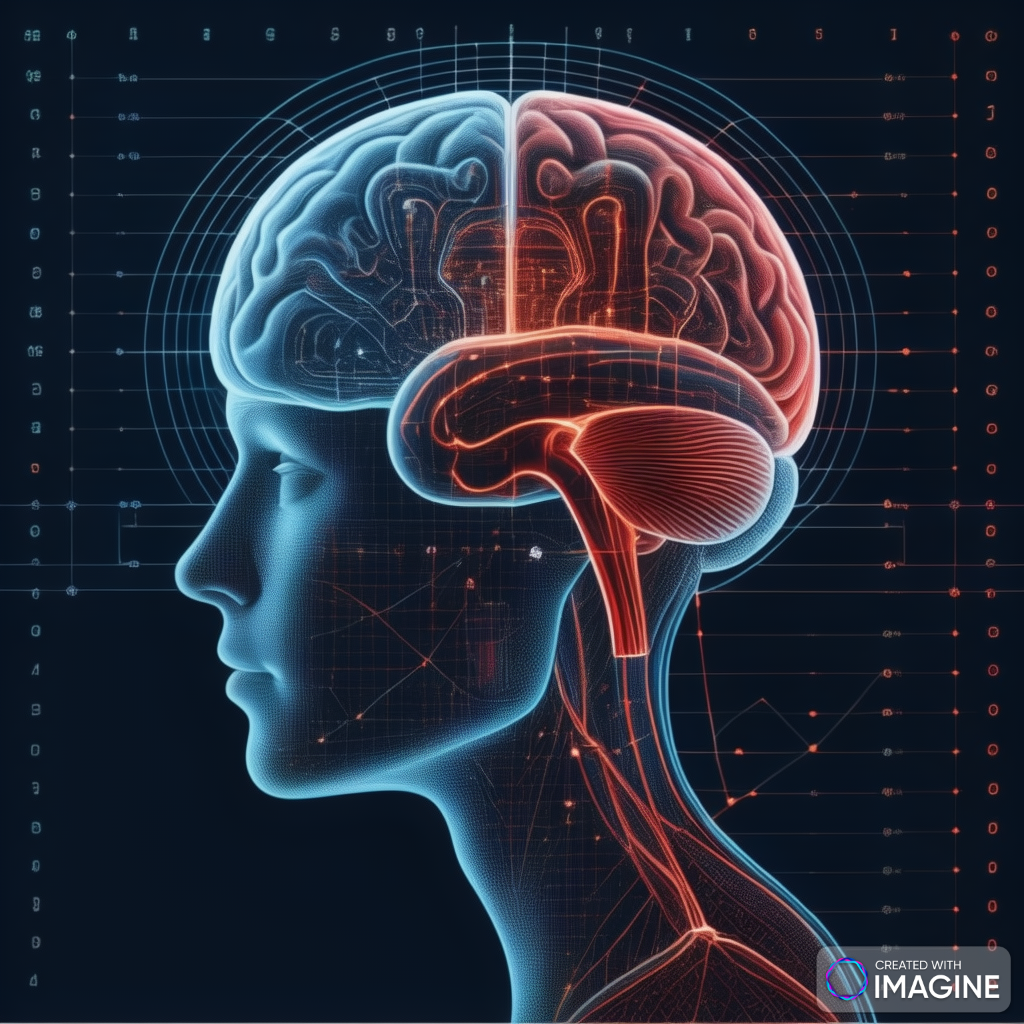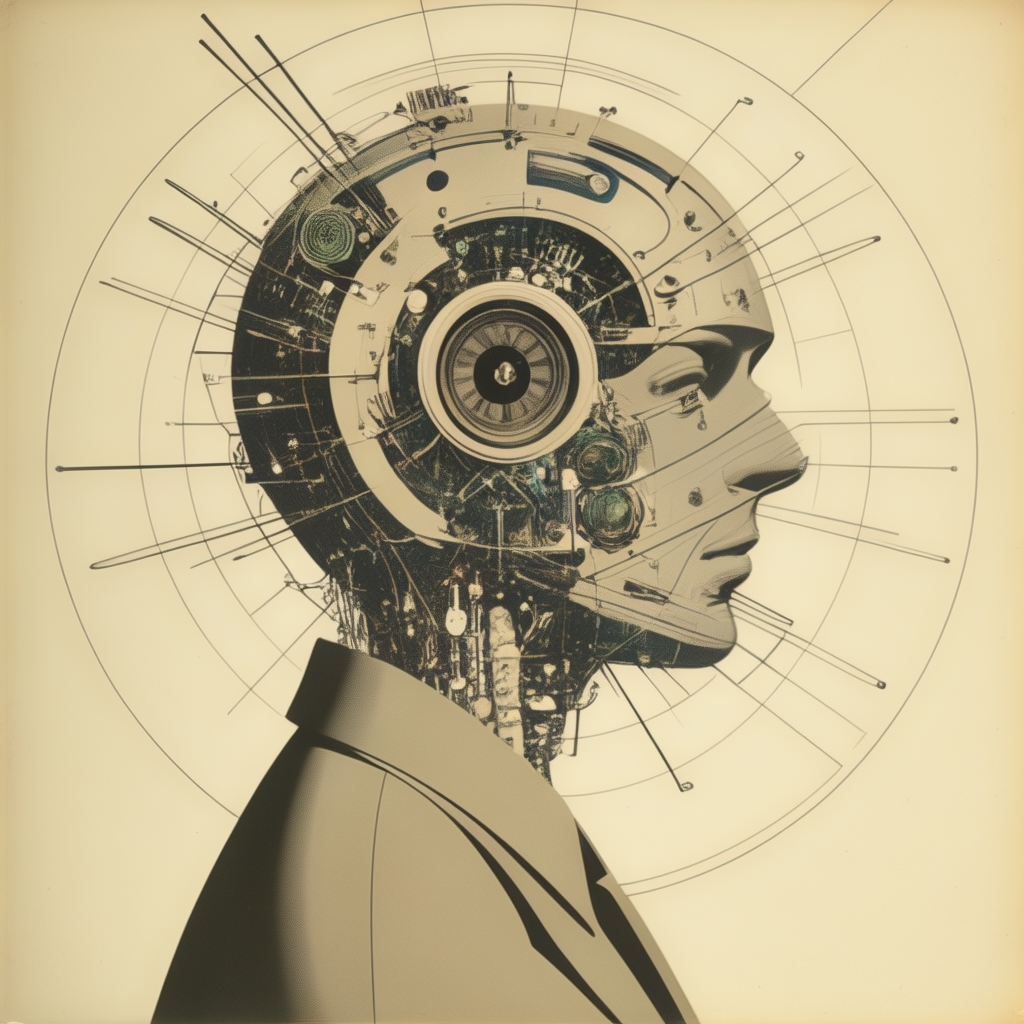In the ongoing quest to unravel the mysteries of the human mind, cognitive theory has emerged as a guiding framework, providing insights into how we perceive, think, and behave. Yet, as technology continues to advance at an exponential rate, there is a growing recognition that cognitive theory could benefit from aligning more closely with the principles of computer programming. In this blog post, we’ll delve deeper into this proposition, exploring additional reasons why cognitive theory should resemble computer programs.
In the quest to understand the intricate workings of the human mind, cognitive theory has long been a cornerstone of psychological inquiry. Yet, as technology continues to advance at an unprecedented pace, there is a growing sentiment that cognitive theory should evolve to mirror the structure and function of computer programs. In this blog post, we’ll explore the rationale behind this proposition and delve into the potential benefits of aligning  theory with computational models.
theory with computational models.
The Parallels Between Minds and Machines
At first glance, the notion of likening the human mind to a computer program may seem overly reductionist or even mechanistic. However, upon closer examination, the parallels between these two systems become increasingly apparent. Just as a computer program processes information through a series of algorithms and operations, the human mind engages in complex cognitive processes to perceive, interpret, and respond to stimuli from the environment.
Consider, for instance, the concept of memory. In both computers and humans, information is encoded, stored, and retrieved through specific mechanisms. Similarly, problem-solving involves the manipulation of data and the execution of predefined strategies, akin to the way a computer algorithm tackles a computational task.
Advantages of Computational Modeling in Cognitive Theory
By embracing the principles of computational modeling, cognitive theory stands to gain several significant advantages:
- Precision and Predictability: Computer programs operate according to well-defined rules and algorithms, enabling researchers to precisely simulate and predict cognitive processes. This precision facilitates experimentation and hypothesis testing, allowing for a deeper understanding of how the mind operates.
- Scalability and Flexibility: Unlike traditional theoretical frameworks, computational models can be easily scaled up or down to accommodate various levels of complexity. Whether analyzing individual decision-making or collective societal behaviors, computational approaches offer a versatile toolkit for exploring cognitive phenomena across different scales.
- Interdisciplinary Integration: The interdisciplinary nature of computational modeling encourages collaboration between cognitive scientists, computer scientists, mathematicians, and other fields. By leveraging insights from diverse disciplines, researchers can develop more comprehensive and nuanced models of cognition, enriching our understanding of the human mind.
- Technological Applications: Beyond theoretical insights, computational models of cognition have practical applications in fields such as artificial intelligence, robotics, and human-computer interaction. By mimicking cognitive processes in machines, researchers can design more intelligent systems that better emulate human-like behavior and decision-making.
Challenges and Considerations
While the prospect of integrating cognitive theory with computer programming holds great promise, it is not without its challenges. For one, the complexity of the human mind far exceeds that of any existing computer program, posing significant hurdles in terms of model fidelity and accuracy. Additionally, the dynamic and adaptive nature of cognition presents challenges in capturing its fluidity and variability within static computational frameworks.
Moreover, there are ethical considerations surrounding the use of computational models in cognitive research, particularly concerning privacy, autonomy, and the potential for unintended consequences in technological applications.
Harnessing the Power of Parallel Processing
One key advantage of computational models is their ability to harness the power of parallel processing. Unlike the sequential nature of human thought, computers can execute multiple tasks simultaneously, leading to significant gains in efficiency and computational speed. By incorporating parallel processing architectures into cognitive models, researchers can better emulate the distributed nature of cognitive processing, shedding light on how information is integrated and processed across neural networks.
Dynamic Adaptation and Learning
Another compelling aspect of computer programs is their capacity for dynamic adaptation and learning. Through techniques such as machine learning and neural networks, programs can iteratively refine their performance based on feedback from the environment. Similarly, the human brain exhibits remarkable plasticity, constantly rewiring itself in response to new experiences and information. By integrating principles of adaptive learning into cognitive models, researchers can capture the dynamic nature of cognition and explore how knowledge is acquired, consolidated, and updated over time.
Embracing Uncertainty and Probabilistic Reasoning
In the realm of cognitive processing, uncertainty is omnipresent. From perceptual ambiguities to probabilistic decision-making, the human mind must navigate a complex landscape of uncertain information. Computer programs excel at handling uncertainty through probabilistic reasoning techniques such as Bayesian inference and Monte Carlo simulation. By incorporating probabilistic models into cognitive theory, researchers can better capture the inherent uncertainty of human cognition and explore how individuals make judgments and decisions under conditions of ambiguity and risk.
Bridging Levels of Analysis
Cognitive phenomena manifest across multiple levels of analysis, from neural circuits and brain regions to individual behaviors and societal dynamics. Computer programs offer a unified framework for bridging these disparate levels, enabling researchers to develop hierarchical models that capture the interactions between micro-level processes and macro-level phenomena. By integrating insights from neuroscience, psychology, and computational modeling, researchers can construct more comprehensive theories of cognition that span multiple scales of analysis, shedding light on the complex interplay between biol
Fostering Collaboration and Open Science
Finally, the adoption of computational modeling in cognitive theory fosters collaboration and promotes open science practices. Through open-source software platforms and collaborative frameworks, researchers can openly share code, data, and methodologies, accelerating the pace of scientific discovery and facilitating reproducibility and transparency. By embracing a culture of collaborative inquiry, cognitive scientists can leverage the collective expertise of the global research community, advancing our understanding of the mind in ways that would be impossible through isolated efforts.
As the field of cognitive science continues to evolve, there is a growing recognition of the potential benefits of aligning cognitive theory with the principles of computer programming. Building upon the foundational concepts discussed earlier, let’s explore additional reasons why cognitive theory should embrace the computational paradigm.
Simulation of Emergent Phenomena
One of the hallmarks of complex systems, including the human mind, is the emergence of higher-order phenomena that cannot be easily predicted from the properties of individual components alone. Computer programs excel at simulating emergent behaviors through agent-based modeling, cellular automata, and other computational techniques. By integrating these methods into cognitive theory, researchers can explore how cognitive processes give rise to emergent phenomena such as collective decision-making, cultural evolution, and social dynamics, shedding light on the complex interplay between individual cognition and collective behavior.
Integration of Multimodal Information
Human cognition is inherently multimodal, drawing upon a diverse array of sensory inputs, linguistic cues, and contextual information to construct coherent representations of the world. Computer programs offer a versatile platform for integrating and processing multimodal information, leveraging techniques such as natural language processing, computer vision, and sensor fusion. By incorporating these capabilities into cognitive models, researchers can explore how humans perceive, interpret, and interact with their environment across different modalities, paving the way for more holistic theories of cognition that account for the full richness of sensory experience.
Exploration of Virtual Environments
With the advent of virtual reality (VR) and augmented reality (AR) technologies, researchers now have the ability to immerse participants in realistic simulated environments, offering new opportunities for studying cognitive processes in ecologically valid settings. Computer programs play a central role in the development of these virtual environments, enabling researchers to manipulate variables, control stimuli, and collect data in a controlled yet immersive manner. By leveraging VR and AR technologies, cognitive scientists can investigate a wide range of phenomena, from spatial navigation and perception to social interaction and decision-making, with unprecedented realism and precision.
Incorporation of Embodied Cognition
Embodied cognition emphasizes the role of the body and its interactions with the environment in shaping cognitive processes and behaviors. Computer programs can embody cognitive agents within simulated bodies, enabling researchers to explore how sensorimotor experiences influence perception, action, and cognition. By integrating principles of embodied cognition into computational models, researchers can investigate fundamental questions about the relationship between body and mind, such as how gestures influence language comprehension, how spatial representations are grounded in bodily experience, and how motor imagery shapes cognitive processing.
Exploration of Collective Intelligence
Beyond individual cognition, there is growing interest in understanding how groups of individuals collectively solve problems, make decisions, and generate novel insights. Computer programs offer a powerful tool for simulating and studying collective intelligence, enabling researchers to model interactions between multiple agents in virtual environments. By exploring the dynamics of collective intelligence through computational modeling, researchers can uncover the underlying mechanisms that drive group behavior, identify factors that enhance or inhibit collective performance, and inform the design of more effective collaborative systems in domains ranging from business and healthcare to education and governance.
Conclusion: A New Era of Cognitive Inquiry
In conclusion, the integration of cognitive theory with computer programming marks the dawn of a new era in cognitive science. By embracing simulation of emergent phenomena, integration of multimodal information, exploration of virtual environments, incorporation of embodied cognition, and investigation of collective intelligence, researchers can develop more comprehensive and nuanced theories of cognition that capture the full spectrum of human thought and behavior. As we continue to explore the frontiers of minds and machines, the synthesis of cognitive theory and computer programming promises to unlock new insights into the mysteries of the human mind and pave the way for transformative advances in science, technology, and society.
the convergence of cognitive theory and computer programming offers a promising path forward in our quest to understand the intricacies of the human mind. By embracing parallel processing, adaptive learning, probabilistic reasoning, hierarchical modeling, and collaborative inquiry, researchers can develop more sophisticated theories of cognition that capture the richness and complexity of human thought and behavior. As we continue to bridge the gap between minds and machines, the synthesis of cognitive theory and computer programming promises to unlock new frontiers in our understanding of what it means to be human in an increasingly interconnected world.
the analogy between cognitive theory and computer programs offers a compelling framework for understanding and exploring the complexities of the human mind. By embracing computational modeling, researchers can unlock new avenues of inquiry and develop more sophisticated theories of cognition. While challenges remain, the convergence of minds and machines holds the potential to revolutionize our understanding of what it means to be human in the digital age. As we continue to bridge the gap between biology and technology, the synthesis of cognitive theory and computer programming promises to illuminate the inner workings of the most intricate machine of all—the human brain.






